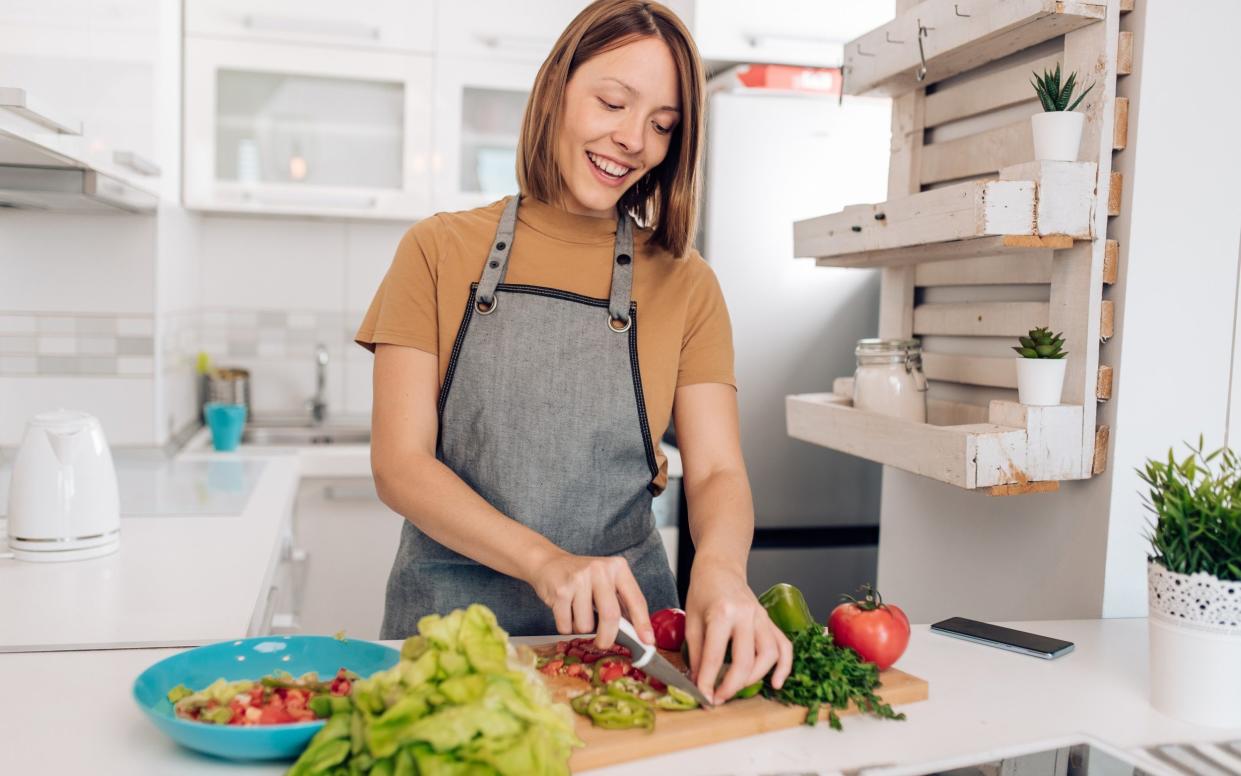Three easy ways to absorb more nutrients from your food

“Eat the rainbow” has been the healthy-eating mantra for some time now, but even those of us with the most colourful salad drawers are up against it as we age. A reduction in stomach acid, a condition known as atrophic gastritis which leads to poor absorption of vitamins and minerals, is estimated to affect 20 per cent of the population over the age of 65. And this matters because micronutrient deficiencies can increase our risk of disease.
Indeed, a new study published in the American Journal of Clinical Nutrition found that participants with low levels of vitamin D were 54 per cent more prone to dementia than those with normal vitamin D levels. Deficiencies in other key micronutrients have also been linked to age-related disorders, including cardiovascular disease and some cancers.
Here are three easy ways to help your body absorb more nutrients from your food.
1. Careful how you cook
Some micronutrients are water-soluble and heat sensitive, especially the B vitamins and vitamin C. The latter can be reduced by as much as 50 per cent by boiling. Steaming vegetables, on the other hand, only reduces the vitamin C content by 15 per cent and microwaving by 20 per cent. Stir-frying is another good option as there is no water involved and the cooking time is generally quite short. B vitamins are abundant in meat but up to 60 per cent can be lost when cooked and the juices run out, so be sure the cooking juices are poured back over the meat when rested.
Conversely, cooking can increase the level of some other nutrients. Lycopene, a plant compound with antioxidant properties, increases by 25 per cent when tomatoes are cooked, and the bioavailability (the extent to which a nutrient can be absorbed by the body) of beta-carotene, found in red, orange and yellow plants like tomatoes, peppers, carrots and sweet potatoes, is also increased by cooking. These vegetables lend themselves very well to roasting in the oven – drizzle with olive oil, season well and roast for 30 minutes at 200C.
2. Cut up fruit and vegetables but keep the skins on
Cutting up raw fruits and vegetables just before eating helps break down the cell walls, which makes the nutrients contained within the cells more easily available. For example, crushing garlic releases a compound called allicin, which can help lower cholesterol and blood-pressure levels. If food is cooked, it’s better to cut it up after cooking as less will have been exposed to heat and water, which can reduce the nutrient content. And don’t peel fruit and veg unless you have to, as fewer nutrients will be lost if the skins are kept on.
3. Play food pairs
The bioavailability of certain nutrients is increased when paired with other foods. For example, vitamins A, D, E and K (found in a wide-range of foods) are fat-soluble, so including healthy fats like nuts, avocado or olive oil in our meals is important to ensure they are absorbed.
To increase your uptake of iron from foods like red meat, leafy greens, shellfish and legumes, pair with vitamin C from berries, citrus fruit, tomatoes and peppers. And vitamin D – which we mainly get from the sun on our skin but which is also found in oily fish, eggs and mushrooms – aids the absorption of calcium, found in dairy products, tofu and leafy green vegetables.
A good example of food pairing is this hot-smoked salmon pâté, which has vitamin D from the oily fish and calcium from the Greek yogurt. In a bowl, mash one packet of hot-smoked salmon fillets with 2 tbsp Greek yogurt, 2 spring onions (finely sliced) and the juice of ½ lemon. Season to taste and eat atop some crunchy granary bread.

